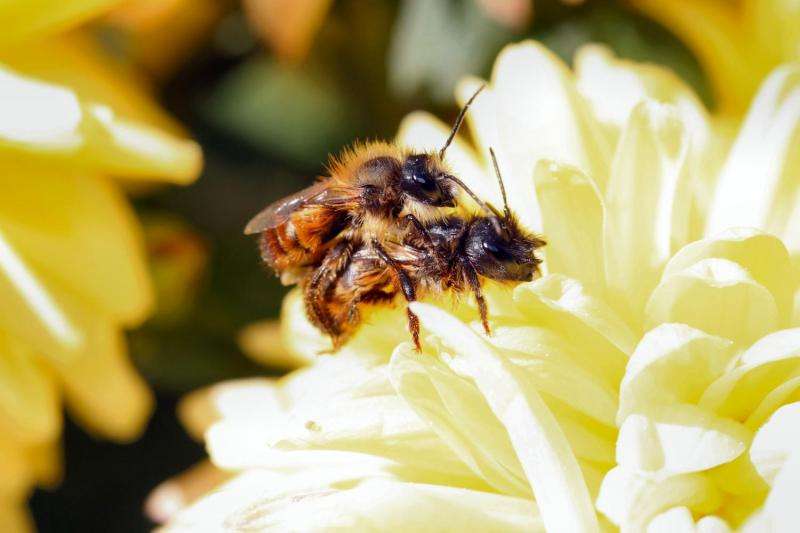Vibrations tell bees where mates are from

In choosing among potential suitors, red mason bee females pay attention to the specific way in which males of the species vibrate their bodies. Now, researchers reporting in the Cell Press journal Current Biology on October 22 have found that those vibrations carry important information about where their potential mates are from.
The findings are the first to suggest that bees rely on vibrations, in addition to chemical signals, as a mode of mate recognition.
"We were really surprised to find that bees use vibrational signals not only as a sign for fitness but also for information on where a male comes from," says Taina Conrad of the University of Ulm in Germany. "This is complex information, and we did not expect this to be encoded in this signal."
Red mason bees (O. bicornis) in Europe fall into one of two main subspecies, which are hard to tell apart from one another. The two differ only in one morphological trait: the color of the hair on the tips of their abdomens, which is either black or red.
Earlier studies showed that female bees rely on vibrational signals to identify stronger mates, preferentially choosing males that vibrate for longer periods of time. Conrad and Manfred Ayasse wondered whether those vibrational signals might also carry information about a male bee's subspecies identity.
To find out, they attached a small magnet to the males' thoraxes, using a frequency generator and electromagnetic field to transfer a previously recorded signal from a male of one subspecies onto the magnet (and the male) of the other subspecies.
"Fortunately, the male stopped its own vibrations, so the resulting vibrations were indeed equivalent to the recorded ones," Ayasse says.
Tests of the mating preferences of females showed strong preference for males from their own region, based on those patterns of vibration. The findings show that vibrational signals encode not only the fitness of particular males, but also information about the region of origin.
The findings show divergence between the two species, which may lead them to become two separate species. They are also a reminder that animals sometimes communicate in unexpected ways.
The researchers say the next step is to determine exactly what aspect of the vibrational signals gives away a male's place of origin. Their newly developed method will also enable further study of vibrational communication in other bees.
More information: Current Biology, Conrad and Ayasse: "The Role of Vibrations in Population Divergence in the Red Mason Bee, Osmia bicornis" dx.doi.org/10.1016/j.cub.2015.08.059
Journal information: Current Biology
Provided by Cell Press



















